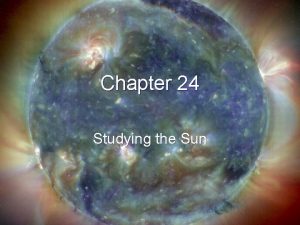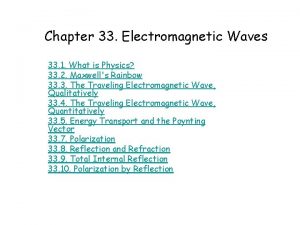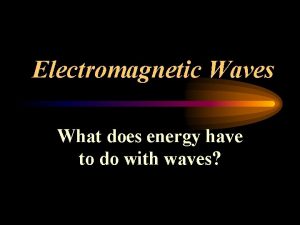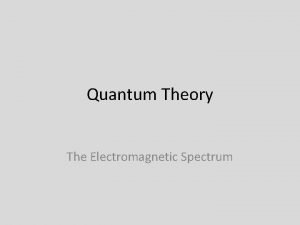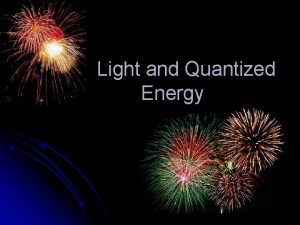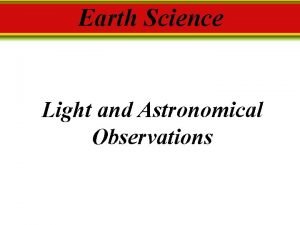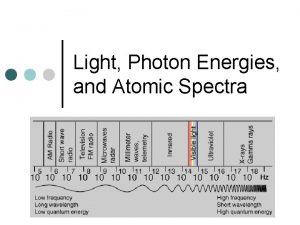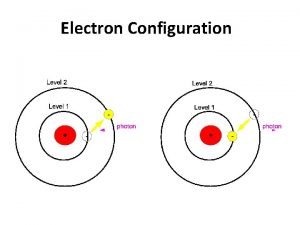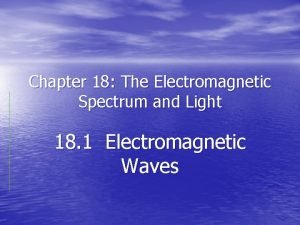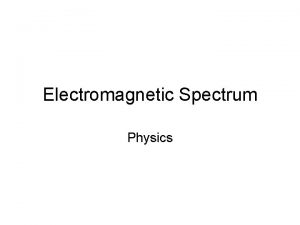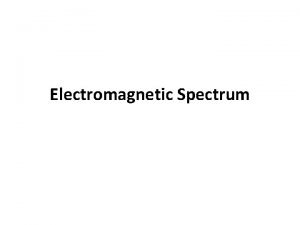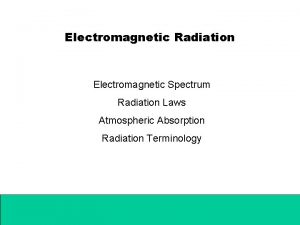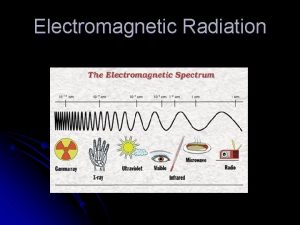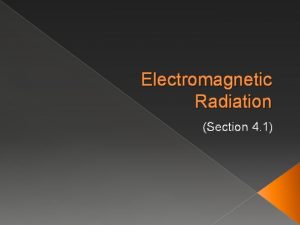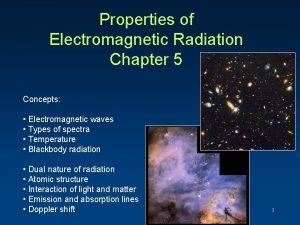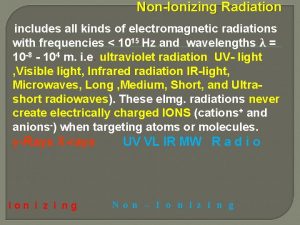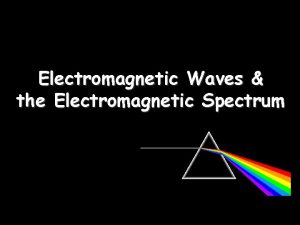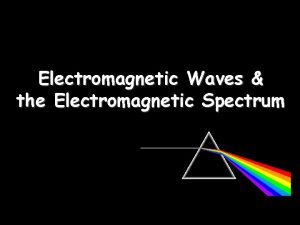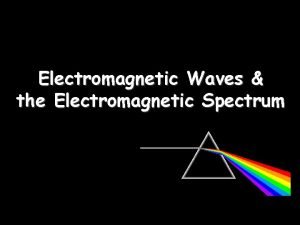Chapter 24 Studying the Sun Electromagnetic radiation includes





















- Slides: 21

Chapter 24 Studying the Sun

Electromagnetic radiation includes gamma rays, Xrays, ultraviolet light, visible light, infrared radiation, microwaves, and radio waves Electromagnetic Spectrum – the arrangement of electromagnetic radiation according to wavelength

The Light Spectrum

Spectroscopy – the study of the properties of light that depend on wavelength

When the spectrum of a star is studied, the spectral lines act as “fingerprints” These lines identify the elements present and thus the star’s chemical composition Solar Spectrum

Doppler Effect – the apparent change in frequency of electromagnetic or sound waves caused by the relative motions of the source and the observer

Red Shift/Blue Shift In astronomy, the Doppler effect is used to determine whether a star or other body in space is moving away from or toward Earth

Refracting Telescope – a telescope that uses a lens to bend and concentrate the light from distant objects

Reflecting Telescope – a telescope that concentrates light from distant objects by using a concave mirror Most large optical telescopes are reflectors; light does not pass through a mirror so the glass for a reflecting telescope does not have to be of optical quality

Radio Telescope – a telescope designed to make observations in radio wavelengths A radio telescope focuses the incoming radio waves on an antenna, which absorbs and transmits these waves to an amplifier, just like a radio antenna

Space telescopes orbit above Earth’s atmosphere and thus produce clearer images than Earth-based telescopes Hubble Space Telescope

Sun Facts An “Average” Star Diameter = 109 x Earth Volume = 1. 25 x Earth Mass = 332, 000 x Earth Density = ¼ x Earth

We can divide the sun into four parts: the solar interior; the visible surface, or photosphere; and two atmospheric layers, the chromosphere and corona

Photosphere – radiates most of the light we see and can be thought of as the visible “surface” of the sun

Chromosphere – A relatively thin layer of hot gases a few km thick above the photosphere

Corona – outer most portion of the solar atmosphere, very weak and is visible only when the photosphere is covered Solar Wind – Streams of protons and electrons that boil from the corona

Sunspots – dark regions on the surface of the photosphere, an individual spot contains a black center rimmed by a lighter region Sunspots appear dark because of their temperature, about 1500 K less than that of the surrounding solar surface

Prominences are ionized gases trapped by magnetic fields that extend from regions of intense solar activity

Solar Flares – brief outbursts that normally last about an hour and appear as a sudden brightening of the region above a sunspot cluster During their existence, solar flares release enormous amounts of energy, much of it in the form of ultraviolet, radio, and x-ray radiation

Auroras – following solar flares, Earth’s upper atmosphere near the magnetic poles is set alight; also called the northern and southern lights

Nuclear Fusion – The process by which the sun produces energy; this nuclear reaction converts four hydrogen nuclei into the nucleus of a helium atom and tremendous energy is released It is believed that a star our size can exist in its stable state for ~10 Billion years, making our sun middleaged at ~4. 5 Billion years old
 Chapter 24 studying the sun
Chapter 24 studying the sun Waves produced by stars and galaxies
Waves produced by stars and galaxies Intensity of electromagnetic radiation
Intensity of electromagnetic radiation Facts about electromagnetic radiation
Facts about electromagnetic radiation Electromagnetic spectrum conclusion
Electromagnetic spectrum conclusion Types of radiation in the electromagnetic spectrum
Types of radiation in the electromagnetic spectrum Intensity of wave
Intensity of wave Which telescope detects invisible electromagnetic radiation
Which telescope detects invisible electromagnetic radiation Electromagnetic waves are transverse waves true or false
Electromagnetic waves are transverse waves true or false Wave spectrum
Wave spectrum When electromagnetic radiation of wavelength 300
When electromagnetic radiation of wavelength 300 Electromagnetic radiation
Electromagnetic radiation Lesson 1 studying geography
Lesson 1 studying geography Chapter 2 lesson 1 studying geography
Chapter 2 lesson 1 studying geography Chapter 18 electromagnetic spectrum and light
Chapter 18 electromagnetic spectrum and light List the properties of x radiation chapter 38
List the properties of x radiation chapter 38 Hình ảnh bộ gõ cơ thể búng tay
Hình ảnh bộ gõ cơ thể búng tay Bổ thể
Bổ thể Tỉ lệ cơ thể trẻ em
Tỉ lệ cơ thể trẻ em Gấu đi như thế nào
Gấu đi như thế nào Tư thế worms-breton
Tư thế worms-breton
